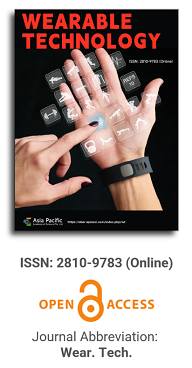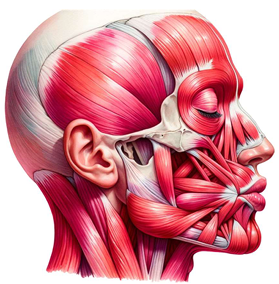

This paper delves deeply into the innovative realm of integrating human emotions with wearable technology. The primary focus is on the conceptualization and development of a kiss transfer device that harnesses the power of wearable technology to bridge the physical gap in human-human interactions. By investigating the intricate nuances of the human-human kissing process, the research seeks to replicate this intimate gesture through a technological medium. The paper not only elaborates on the anatomy, evolution, and hormonal dynamics of kissing but also underscores the transformative potential of wearable technology in capturing and transmitting these intimate moments. This exploration opens up new horizons for long-distance relationships, offering a tangible touchpoint that goes beyond traditional communication methods. Through this pioneering work, the research positions wearable technology as not just a tool for communication but as an extension of our human emotions and expressions.

Strategic choices for high-quality development of intelligent wearable sporting goods industry in the new era
Vol 1, Issue 1, 2020
Download PDF
Abstract
Use research methods such as survey research methods and literature data methods, and use strategic management theory to analyze the strategic development environment of the smart wearable sporting goods industry. On this basis, the strategic goal of high-quality development of the smart wearable sporting goods industry is clarified. It establishes a strategic policy of people-oriented, focuses on research and development, and scientific management, and proposes a strategic development path for cultivating leading enterprises, developing industrial clusters, and promoting research and development innovation. In order to promote the high-quality development of the smart wearable sporting goods industry in the new era, specific strategic safeguard measures are putted forward in terms of providing talent support for industrial development and improving the legal system for the development of the smart wearable sporting goods industry to achieve high-quality development.
Keywords
References
- Zhang X, Lu S, Wang Y, et al. Wearable system design for scientific physical exercise of college students. Youth Sports 2019; (8): 124–125.
- Xiao B, Li Y. The online sales model and management characteristics of sports goods in China. Journal of Beijing Sport University 2015; 38(4): 38–44, 51.
- Li G, Sun Q. ELES model analysis of the dynamic change of urban and rural residents’ sports consumption structure. Journal of Beijing Sport University 2019; 42(1): 98–110.
- Dong S. Research on the application of physical exercise data in primary and secondary school students [PhD thesis]. Chongqing: Southwest University; 2018.
- Dong Q, Zhang X, Shen K. Fields, trends and strategies of “Internet + sports industry” development under the background of healthy China. Sports Culture Guide 2018; (5): 74–78.
- Fu X. Feasibility analysis of wearable devices for guiding scientific exercise and promoting health [PhD thesis]. Beijing: Beijing Sports University; 2018.
- Deng G. Research on the characteristics of physical exercise behavior of college students in Kunming and the effect of smart bracelets on it [PhD thesis]. Kunming: Yunnan University; 2018.
- Yu H. Investigation on the current situation of using smart wearable devices in physical fitness of non–sports college students in Changchun [PhD thesis]. Jilin: Northeast Normal University; 2018.
- Li X. Design and implementation of wearable digital sports–assisted training platform [PhD thesis]. Dalian: Dalian University of Technology; 2018.
- Chen Y. Research on human action recognition method based on wearable sensor data [PhD thesis]. Dalian: Dalian University of Technology; 2018.
- Ren B, Dai J, Xia C, et al. Connotation analysis and supply—Side optimization of China’s sports industry structure. Journal of Beijing Sports University 2018; 41(4): 16–23.
- Li L. Analysis on the development status of China’s wearable smart sporting goods market. World of Labor Security 2017; (32): 56, 68.
- Xie C, Liu Y, Wang Q, et al. Research on the impact of the novel coronavirus pneumonia epidemic on China’s sporting goods industry under the new economic normal and its response. Journal of Beijing Sport University 2020; 43(3): 128–134.
- Zou Y, Tan L. Research on the intelligent development of sporting goods in China: Taking wearable sports products as an example. Journal of Nanjing Institute of Physical Education (Social Science Edition) 2015; 29(4): 87–91.
- Mao X, Zhou A, Huo D. Research on the theoretical model of the business model of sporting goods enterprises under the new normal economic conditions. Journal of Beijing Sport University 2019; 42(9): 40–50.
- Wei H, Li C, Liu S. An empirical analysis of theemployment effect of China’s sporting goods manufacturing exports. Journal of Beijing Sport University 2013; 36(10): 21–26, 32.
Supporting Agencies
Copyright (c) 2020 Hengfen Huang, Jun Qiu

This work is licensed under a Creative Commons Attribution 4.0 International License.

Prof. Zhen Cao
College of Information Science & Electronic Engineering, Zhejiang University
China, China
Processing Speed
-
-
-
- <5 days from submission to initial review decision;
- 62% acceptance rate
-
-
Asia Pacific Academy of Science Pte. Ltd. (APACSCI) specializes in international journal publishing. APACSCI adopts the open access publishing model and provides an important communication bridge for academic groups whose interest fields include engineering, technology, medicine, computer, mathematics, agriculture and forestry, and environment.





